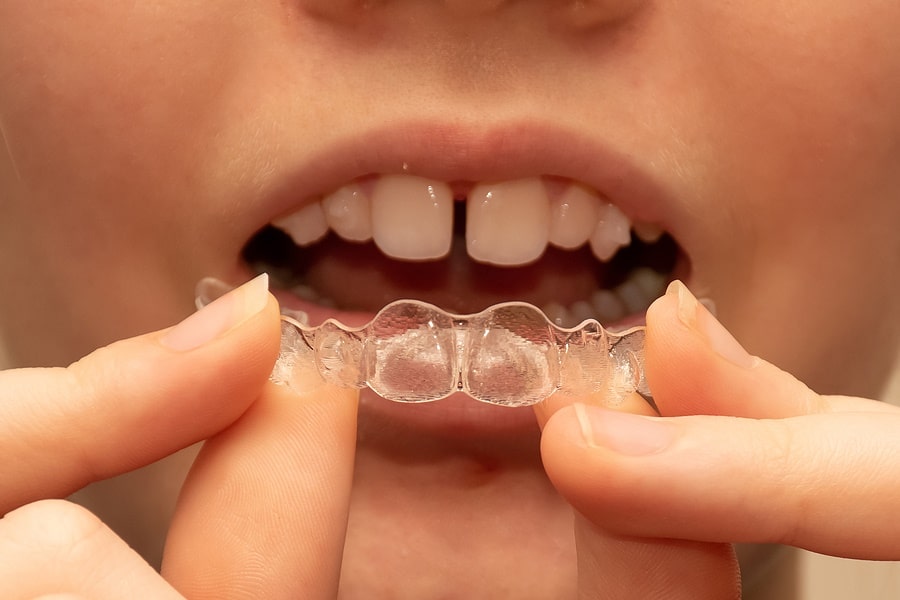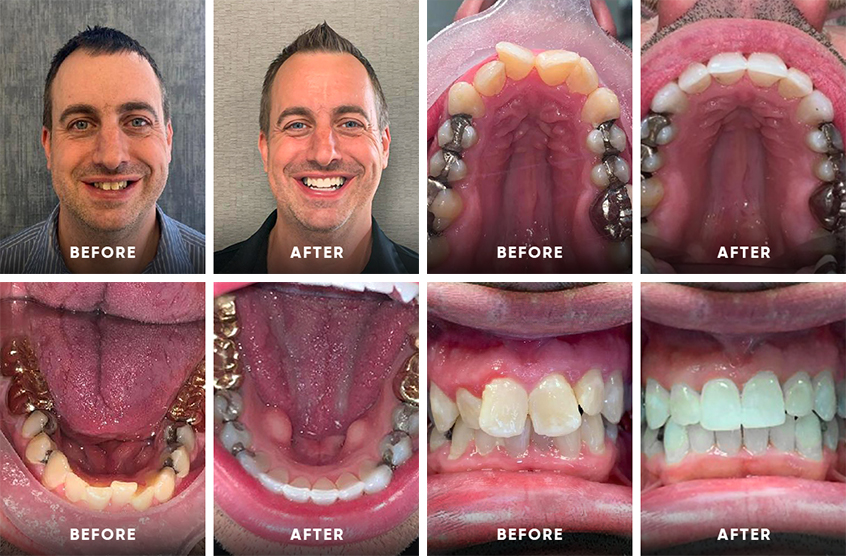Invisalign vs. Standard Dental braces: Which Option Is Right for You?
When thinking about orthodontic therapy, the selection in between Invisalign and traditional braces offers numerous important elements that merit cautious examination. Invisalign provides a very discreet alternative with removable aligners, while conventional braces offer a much more noticeable yet reliable solution for severe misalignment. Each option encompasses distinct benefits and drawbacks related to appearances, convenience, therapy period, and price. Recognizing these subtleties is vital for making an educated choice that lines up with your personal preferences and lifestyle. The question continues to be: which alternative will ideal fulfill your orthodontic requirements and assumptions?
Review of Therapy Alternatives

In contrast, typical braces contain steel brackets and cords that are bonded to the teeth. This approach uses continuous stress gradually to attain alignment. While efficient for intricate orthodontic issues, conventional dental braces call for regular visits for modifications and can present obstacles in maintaining oral health as a result of the difficulty of cleaning around braces and cords.
Both options have their values, and the selection often depends upon particular oral problems, way of living choices, and person compliance. Ultimately, seeking advice from an orthodontic specialist is critical for determining the most suitable treatment plan tailored to private requirements. Comprehending the subtleties of each choice can considerably influence the general success of orthodontic treatment.
Aesthetic Considerations
A significant element affecting the selection in between Invisalign and conventional braces is the aesthetic appeal each treatment provides. Invisalign aligners are crafted from clear plastic, making them practically undetectable when used. This discreet appearance is specifically appealing to adults and young adults who might really feel uncomfortable concerning their orthodontic treatment. The capability to maintain an all-natural smile throughout the positioning process can dramatically improve the individual's confidence in professional and social setups.
On the other hand, standard dental braces are composed of metal brackets and wires, which can be much more noticeable. While innovations in orthodontic modern technology have caused the development of smaller sized braces and tinted elastics, standard braces still preserve an even more noticeable account. For some people, the presence of dental braces may hinder them from looking for essential treatment.
Ultimately, the selection between Invisalign and traditional dental braces might depend upon individual choices concerning appearances. Clients that prioritize discretion typically favor Invisalign, while those that are much less worried regarding visibility may go with conventional braces. Recognizing the visual ramifications of each choice is critical for making a notified decision that straightens with one's way of life and choices.
Comfort and Convenience

In regards to convenience, Invisalign aligners are detachable, allowing clients to enjoy their preferred foods without constraint and keep optimum oral health. Cleaning and flossing are simplified, as the aligners can be gotten throughout these regimens, whereas standard dental braces require mindful navigating around braces and cords.
In comparison, standard dental braces demand normal modifications, making them less practical for those with busy schedules. In general, the convenience and comfort of Invisalign make it an attractive choice for several people looking for orthodontic treatment.
Therapy Duration and Performance
While both Invisalign and typical braces work in correcting dental imbalances, the period of treatment can differ dramatically in between both choices. Generally, Invisalign therapy can take anywhere from 12 to 18 months, relying on the complexity of the case. The clear aligners function by progressively shifting teeth into their desired settings, and normal follow-ups with an orthodontist aid ensure progress stays on the right track.
On the other hand, typical dental braces frequently need a longer dedication, generally varying from 18 months to 3 years. This is due to their fixed nature and using braces and cords, which can be more effective for serious imbalances and intricate instances (Invisalign). The treatment effectiveness of standard dental braces is well-documented, as they enable exact adjustments and higher control over tooth motion
Eventually, the option in between Invisalign and typical braces may hinge on both the expected therapy period and the details dental issues available. Consulting with an orthodontist is critical, as they can provide tailored suggestions based on private needs, making sure the picked approach aligns with preferred end results and durations.
Expense Contrast and Insurance Alternatives
Price plays a considerable function in the decision-making process for individuals taking into consideration orthodontic treatment, whether opting for Invisalign or standard dental braces. get more On average, the expense of Invisalign ranges from $3,000 to $8,000, while standard braces generally set you back between $2,000 and $6,000. Elements influencing these costs include the intricacy of the instance, the duration of therapy, and geographical place.
Insurance insurance coverage can substantially impact out-of-pocket costs. Numerous oral insurance coverage strategies offer partial insurance coverage for orthodontic go to the website treatments, yet the specifics can vary extensively. It is important for individuals to review their insurance policy policies to establish the extent of protection for either alternative. Normally, traditional braces might be more often covered by insurance plans contrasted to Invisalign, which some insurance providers classify as an aesthetic procedure.
In addition, several orthodontic methods use adaptable payment plans, making both treatment options much more obtainable. People should ask about prospective financing choices and discount rates for ahead of time settlements. Reviewing the complete price, consisting of insurance policy advantages and layaway plan, is essential for making an informed decision that straightens with both visual choices and spending plan factors to consider.

Conclusion
In summary, the choice between Invisalign and traditional braces depends upon numerous variables, consisting of visual choices, comfort, treatment duration, and price. Invisalign supplies a very discreet, detachable alternative that promotes dental health and nutritional adaptability, while typical dental braces might be much more appropriate for complicated oral problems and typically come with a lower price point. Eventually, assessment with an orthodontist is important to evaluate specific situations and determine the most suitable therapy alternative for accomplishing optimal oral positioning.
When considering orthodontic therapy, the option in between Invisalign and standard braces offers a number of important variables that merit mindful examination.Comparing Invisalign and standard click for source braces discloses distinct treatment options for orthodontic improvement.While both Invisalign and conventional dental braces are efficient in dealing with dental imbalances, the duration of treatment can differ substantially between the two alternatives.Expense plays a substantial function in the decision-making procedure for individuals thinking about orthodontic therapy, whether choosing for Invisalign or typical braces.In summary, the selection between Invisalign and standard dental braces hinges on several variables, including visual choices, comfort, therapy period, and cost.